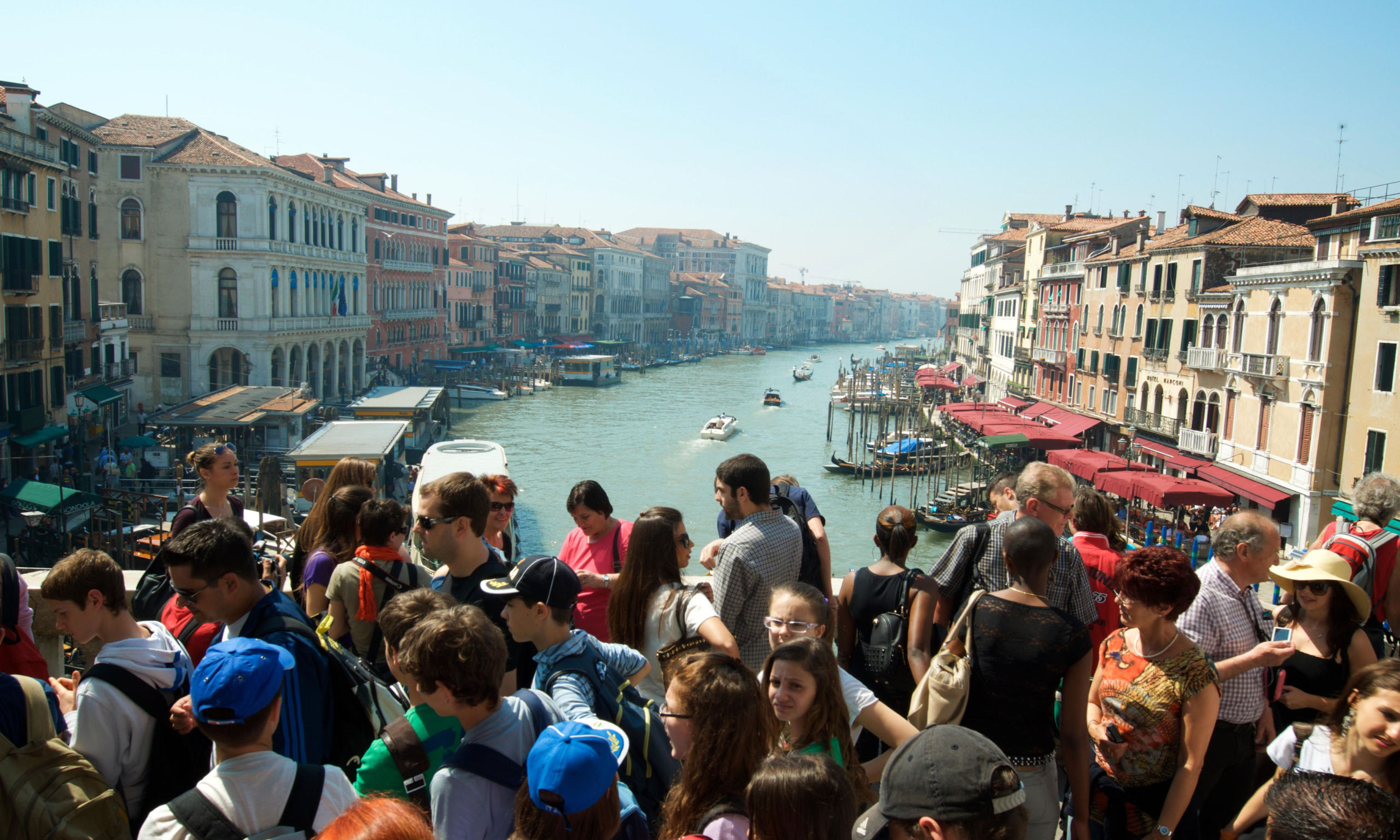Masses of tourists pass along the Rialto Bridge over the Grand Canal
Photo: Lazyllama/Alamy Stock Photo
The 25 April saw the start of the experimental €5 tourist ticket to enter Venice for the day. Around 15,700 were sold, while 113,000 people registered their right to enter for free, either because they had business, family, residence or studied in town.
Everything went smoothly, but a few hundred people protested in Piazzale Roma. Their objection, as reported in the newspaper, La Nuova, is that it is an invasion of privacy because it is based on digital surveillance and that it is a paltry sum with no aim of limiting the number of visitors. An Instagram and Facebook petition “Free Venice from Ticket 2024: it’s a cultural battle” has been signed by over 700 writers and academics, including Donna Leon and the historian Pieralvise Zorzi. “Paying to enter Venice seals the cultural decline, not only of Venice, but of Europe: Venice is no longer considered a city, but a machine to make money”.
The protestors are quite right in that Mayor Brugnaro has put no limit on the number of day visitors entering Venice, and he introduced the ticket largely to fob off Unesco’s intention last year to put Venice on its list of World Heritage in Danger.
He himself admits that it will cost as much to administer in its first year as it will raise, and it will cause maximum annoyance in exchange for a pittance that will do nothing for the city. Above all, it does not do anything to educate visitors and make them proud to help save the world’s most beautiful and fragile city.
He has dodged charging a sensible fee because he fears an electoral backlash, from the airport and the lower-grades of the tourist sector—the pizza restaurants, the water taxi cooperative, the shops selling tat—which are the ones that benefit from the flood of tourists—as many as 100,000 on some days.
Without becoming elitist and limiting Venice to the rich, the municipality needs instead to listen to the experts of Venice’s Ca’ Foscari University and restrict the number of “presences” (over-nighters plus day-visitors) to a maximum of 50,000 a day while raising the cultural expectations of the tourists rather than offering them a theme-park-cum-souq (Luigi Brugnaro’s latest proposal has been to open a huge disco in the Arsenale).
It costs €25 to enter the Uffizi, so surely Venice with all its wonders can charge at least the same, and a €25 fee payable all year round, assuming an average of 40,000 daily visitors would raise around €365m p.a., without even including the hotel tax paid by over-nighters. This would allow the city to set up a project-financing scheme of the kind that pays for the building of motorways with the toll charges. For Venice will need protective engineering and ecological works costing billions to be carried out and maintained—for ever—if it is to survive the relative increase in the mean water level, expected to be a minimum of 50cm by 2100—and rising.
Each visitor to Venice should be seen as a potential supporter and treated as such, not as a crass intruder or sheep to be fleeced. The glories of the city, but also the signs of the rising water level, the eroding stone and brickwork, the dire predictions of the IPCC (Intergovernmental Panel on Climate Change) should be pointed out to them so that they get enlisted as a global “club of Venice champions”, contributing to a ring-fenced conservation fund that would be administered on a public-private basis, with progress reports and transparent, audited accounts.
There is now excess demand everywhere for places of outstanding beauty and fame, so the concept of managing numbers in order not to spoil their exceptional nature is widely accepted. French Polynesia will be imposing a limit of 280,000 visitors from 2027; the Acropolis now allows only 20,000 a day, down from 23,000, with a time-slot reservation system from this month. The Galapagos Islands restrict numbers by imposing a $100 entry charge, Amsterdam has ceased to advertise itself as a tourist attraction, and Trentino Alto Adige has stopped private cars from driving up to the Alpine meadow, the Seiser Alm. In more and more towns, from Berlin to Barcelona, permission to open B&Bs is being denied so that they do not reduce the supply of housing for residents.
In short, we are realising that tourism, like agriculture or mining, has to be sustainable. For it not to destroy the thing we love, it will have to be rationed so that it is maintained and pleasant for everyone—visitors, residents and environment—even though this may mean that we will not be able to go to places as often and with as little planning as in the past.
UPDATE: This article was updated since its first publication on 16 December 2023

